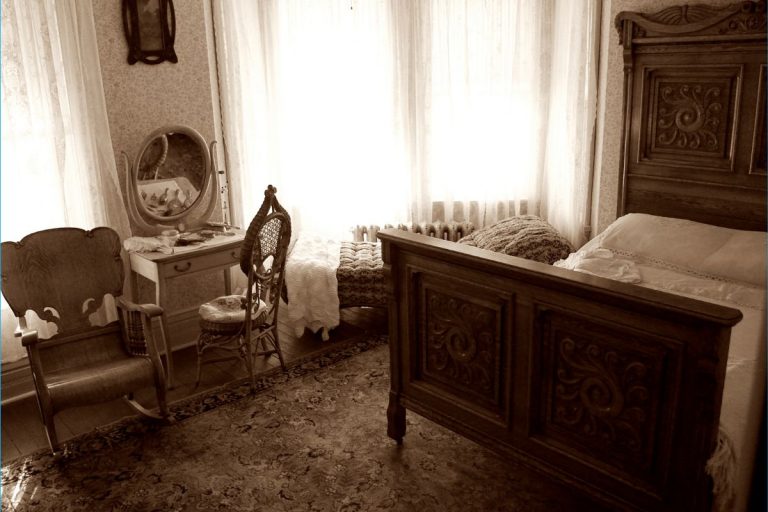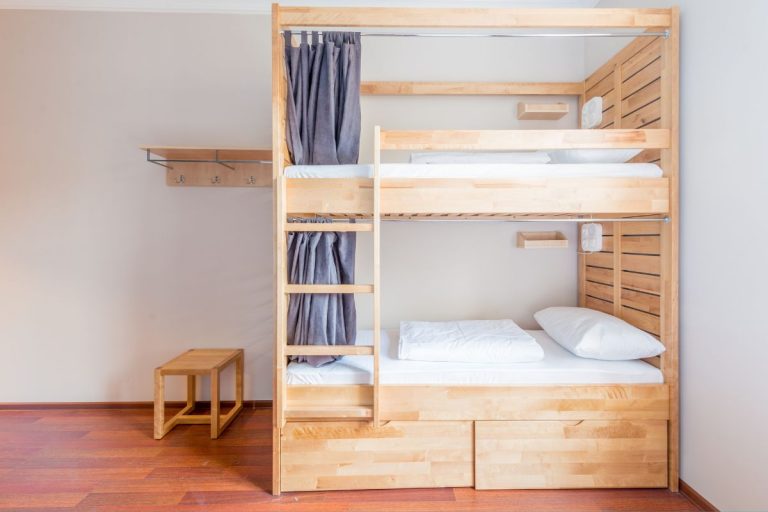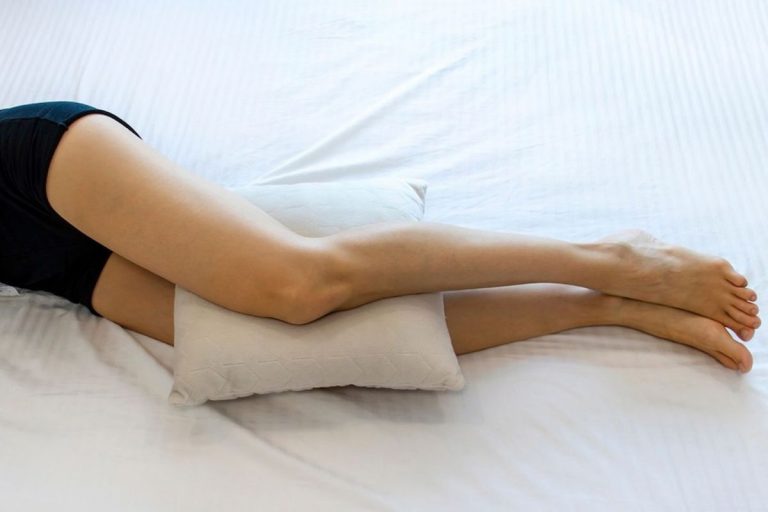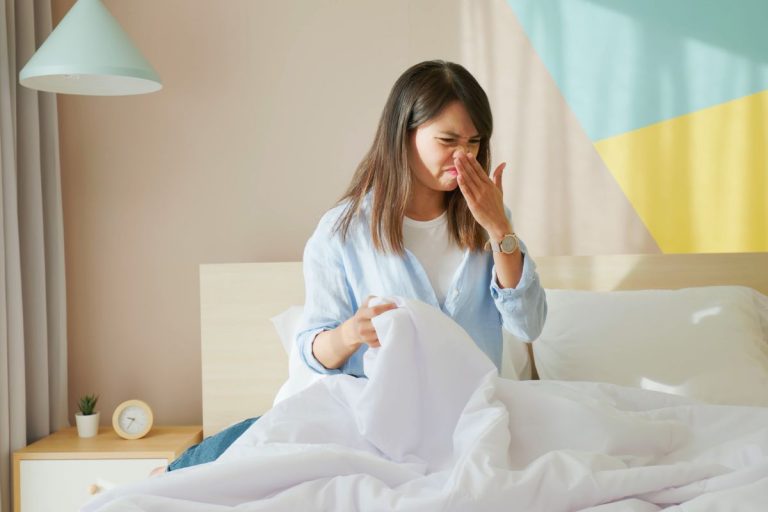Mattresses are a magnet for filth. The reason is gravity. Mattresses attract the airborne particles of dust. Plus, it’s fertile ground for fungi and mold to form. Since we spend many hours in bed, mattresses are in contact with our bodies for a lot of time. Since human bodies secret a lot of liquids like sweat and skin oils, it’s natural for them to become dirty.
Fungi and bacteria find in mattresses a great breeding ground. They fester in there and multiply. Keeping your mattress spotless isn’t just a matter of cleanliness, it’s also a health matter. If you’ve ever heard about bedbugs, you know how terrifying they can be.
And, don’t think that great maintenance is enough to guarantee a spotless bed. Even the most obsessed cleaner will run into yellow stains on the mattress now and then.
In this article, we are going to focus on the yellow stains that pop up on mattresses now and then. We’ll see what causes them, and how to clean them without headaches. Sometimes they are just innocuous dirty spots, but they could also be concentrations of mold. Keeping your bed clean is important for your health.
What Causes the Yellow Stains on the Mattress?
There are many things that could cause yellow stains on your mattress. Some are harmless, others are dangerous for your health. Since there’s no way for the average person to discern which is which, you should always clean yellow stains as soon as you notice them.
Stains are gross, so you should always clean them. Your mattress is where you sleep, keep it clean!
Our bodies secret a lot of different liquids. There is sebum, an oil produced by our body to keep skin protected and hydrated. Sebum is also found in hair.
There are also more gross things that could cause the yellow stains. If you are someone who eats in bed, oily food could be a cause of yellow stains. If you have incontinence issues, urine can also cause the yellow stains you see on mattresses. Pets and kids are also a reason urine could end up on your bed.
If you live in a humid area, you probably sweat a lot in bed. Sweat is vicious because it’s invisible at first, but if you let it build up, it’ll leave a mark. An unpleasant and stinky one.
Mold is by far the worst cause for yellow stains on a mattress. It’s also the result of the above issues. Sweat, urine, and oil will cause mold to grow on your mattress. Mold grows on moisture, and while not all of it is dangerous, there are species that release a toxic substance called mycotoxins.
Mycotoxins attack your respiratory system. If you notice you have breathing issues, especially at night, inspect your bed and look for mold, as it might be the cause. Mold can also cause skin irritability and fungal infections.
Last, aging also causes the mattress to lose its original white coloring. That’s natural and harmless, but it might make to harder to spot yellow stains on the mattress. If your mattress is ancient, it’s probably better to replace it.
How to Remove Yellow Stains from Mattresses: 3 Solutions
The first thing you must absolutely do before commencing your mattress’ cleaning is disinfecting it. Making sure you are working in a healthy environment is the first step. While you’re at it, take the chance to launder your bed sheets and blankets. You don’t know if the mold has expanded elsewhere, and you’re already cleaning your stuff, anyway.
Once you know you are working in a disinfected environment, start by vacuuming off the dust and debris from the mattress. Pay extra attention to do it around the corners, as those are the places where dust loves to gather. They are also coincidentally the most annoying places to reach.
Now it’s time to make your cleaning solution. You have two choices here. You can go for a natural solution, or for a chemical one. Both will get the job done, so I can’t tell you what to use. A natural solution is better for the environment, but an industrial one guarantees your mattress will be clean. It’s up to you to decide how to approach the matter.
Warning: NEVER pour water on the mattress, or you risk making things worse. The humidity will make mold grow back even stronger. A wet cloth is enough to clean the stain.
The Natural Solution
This is the more environmentally friendly solution. Another perk of using this method is that everyone should have the required materials at home. You don’t have to go out and buy a product specifically to deal with the nasty stain on your mattress.
Baking soda is your friend. Combine water, salt, and baking soda in a bowl to make a mixture. Alternatively, sprinkle the baking soda directly on the bed. Don’t focus only on the stained area, though use more mixture/baking soda on it than in other places. You are cleaning your entire mattress and ensuring the mold didn’t spread too much.
Once you have applied the mixture, let it rest for 30 minutes. This lets it do its work and makes the stain easy to wash away. After the 30 minutes have passed, wipe the stain with a wet towel. You don’t have to wipe the baking soda in other areas, you can just vacuum it away once you’re done cleaning the stain.
Warning: this solution works great on fresh stains, but if the one on your bed has been there for a while, you’ll most likely need to use a chemical one.
The Chemical Solution
The process isn’t that different from the one you read in the natural solution. It requires more materials, but it offers better cleaning, and it works great on older, more resistant stains. Whereas the natural solution is better suited to fresh stains.
You’ll still need baking soda, except this time you’ll mix it with dish soap. Any dish soap will work fine, don’t worry too much about brands or scents. The solution you make should be bubbly. Apply the solution to the stained area, stroking it with gloves or a wet towel. Once you’ve applied the solution to the entire stained area, let it rest for about 10 minutes. Then, wipe it with a wet towel.
You aren’t done yet. Spray the stained area with hydrogen peroxide and then rub the stain with your trusty wet towel. You’re basically done. Wipe the remaining hydrogen peroxide with a dry cloth. Now you’re finished. Unless the stain hasn’t gone away. If that’s the case, repeat the entire process from scratch.
Note: If the stain has been there for a while, it is likely you are going to have to do the process 2 or 3 times before getting rid of it.
The Extreme Solution
You can replace your mattress if it’s too old. That’s it. It was that simple. This is obviously not always doable, and it’s also the most expensive solution. But some people seem to not realize it is viable.
How old is too old for a mattress?
With age, they lose their typical white color. A mattress is too old when it turns dark yellow. When spotting yellow stains starts becoming a challenge is your clue.
Conclusions
Cleaning yellow stains on your mattress is easy if you know how to do it. Now that you’ve read this article, you know the dangers of leaving stains on your mattress unchecked, and how to get rid of them.
Your major preoccupation should be with mold and other potentially toxic agents that could thrive on your mattress. Remember that even with perfect maintenance, your mattress will most likely get dirt at some point.
Keep your room clean. You don’t need to clean your mattress that often. Twice a year is more than enough to keep your mattress clean.
Also Read:





